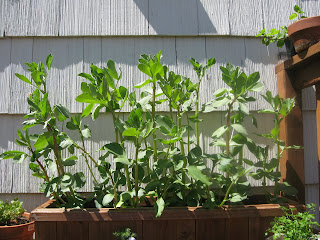If you
Wiki parsley, it'll tell you that the produce code is 4899.
Hm.
Ohhhhhkay.
Wiki is a funny (and often times entirely informative) place. But the produce code? If I had more time I'd wiki all the produce I could think of...just to see if they list the produce codes for most of our fruits and veggies.
I digress.
Parsley.
I really love parsley. My favorite application of the herb: herby eggs.
Yum.
And it's rather astonishing that I enjoy this carrot kin as I do. Take a stroll with me down memory lane for a moment, won't you?
There was a family that cared for my sister and I during the week while Mom and Dad were off to work -- Mr. Pete and Mrs. Liz. They were awesome. I loved my time there. But when Mrs. Liz gave birth to their fourth child, we stayed with a new sitter's family for a month or so (maybe it was less, but it felt like an eternity to me). Pat. Her name was Pat. She had a husband who never spoke - I have just the haziest recollection of him. And she had two boys,
Einer and Bret. And I am not kidding, they looked like
Bert and Ernie.

Einer was short with a round face and an olive complexion and was a bit a spaz - he was constantly caught with his finger in the butter dish, which always grossed me out. Bret was older, taller, with a long face and fairer skin. He was quieter, more reserved.
Anyway, Pat had a green house...and as far as I could tell, the only thing she grew in that green house was parsley. Lots and lots of curly leaf parsley. And a big, ol' pile of it always sat perched on our plate at meal time. And this wasn't garnish. This was a critical part of the meal and we were expected to eat it all.
I hated it. And she made me eat it.
So, up until about four years ago, I entirely avoided the stuff. Flat leaf, curly leaf, I didn't discriminate. Nor did I touch the stuff (except maybe to flick it off my plate).
But the wounds of my past have healed - hee - and I'm able to get beyond it now. And bully for me because flat leaf parsley rocks!!!
And it loves to grow in my neck of the woods. I'm willing to bet it loves to grow just about anywhere. I've grown it successfully from seed in the past -- the key though is to soak the seeds for several hours before planting them. Parsley doesn't much like full sun in summer's heyday --better to move them to a partially shady spot. But in spring, parsley loves to soak up the sun. They don't much like getting dried out - so be sure to keep the soil moist.
So I've got three pots of the stuff right now. I had four but I was a bit overzealous in the harvesting of my over-wintered bunch and it's pretty tired. I hope to coax it back. It's not the end of the world if it doesn't bounce back though - parsley plants aren't near as tasty (in my experience, anyway) the second time around. I didn't have any parsley seed so I ended up buying two plants at (enter: angels singing on high)
Portland Nursery and divided one into two so (calculating) now I have three. And I feed off of them every day.
(You can see the pinched stems here. I did that. This morning! Herby eggs. Mmmmmm)
So never mind the produce code -- I don't need to go to market for parsley.
Like I said, I'm a rich girl. :)















































